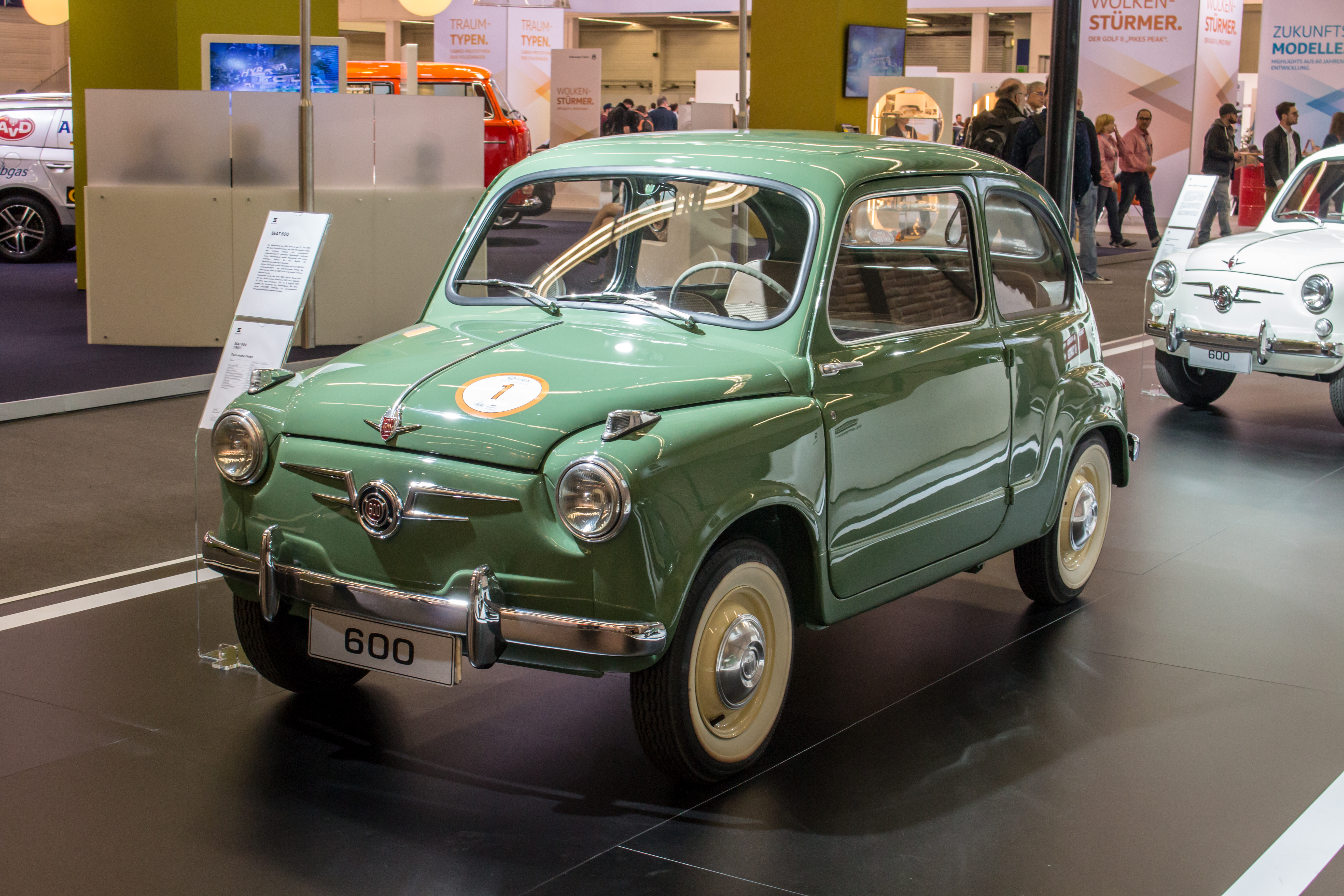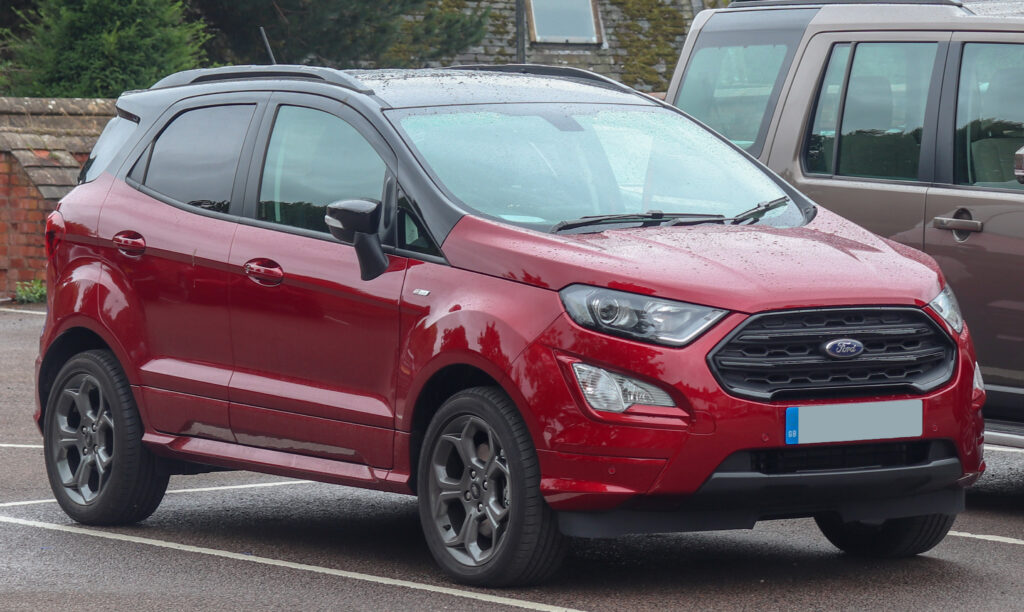
Let’s face it: the journey of car ownership can sometimes hit a frustrating roadblock. What seems like a promising purchase on the showroom floor can, over time, transform into a significant source of buyer’s remorse, leaving owners questioning their investment. This isn’t just about a fleeting disappointment; it’s about the tangible financial impact when a vehicle fails to live up to expectations, often plummeting in value far faster than anticipated.
Considering the substantial financial commitment involved in buying new or used cars today, making an informed decision is more critical than ever. Relying solely on a vehicle’s exterior aesthetics or headline specifications can be a perilous path, potentially leading to costly mistakes and unforeseen headaches down the road. It’s a common pitfall that savvy consumers learn to navigate by understanding the real-world experiences of others.
To help you steer clear of such financial regrets, we’ve compiled an in-depth analysis of 15 vehicles that many owners wish they had never purchased. This isn’t just a list; it’s a practical guide based on common complaints, persistent issues, and notorious depreciation trends, offering invaluable insights for anyone looking to make a smarter automotive investment. Learning from these collective experiences can be one of the most effective ways to avoid repeating the same costly errors.
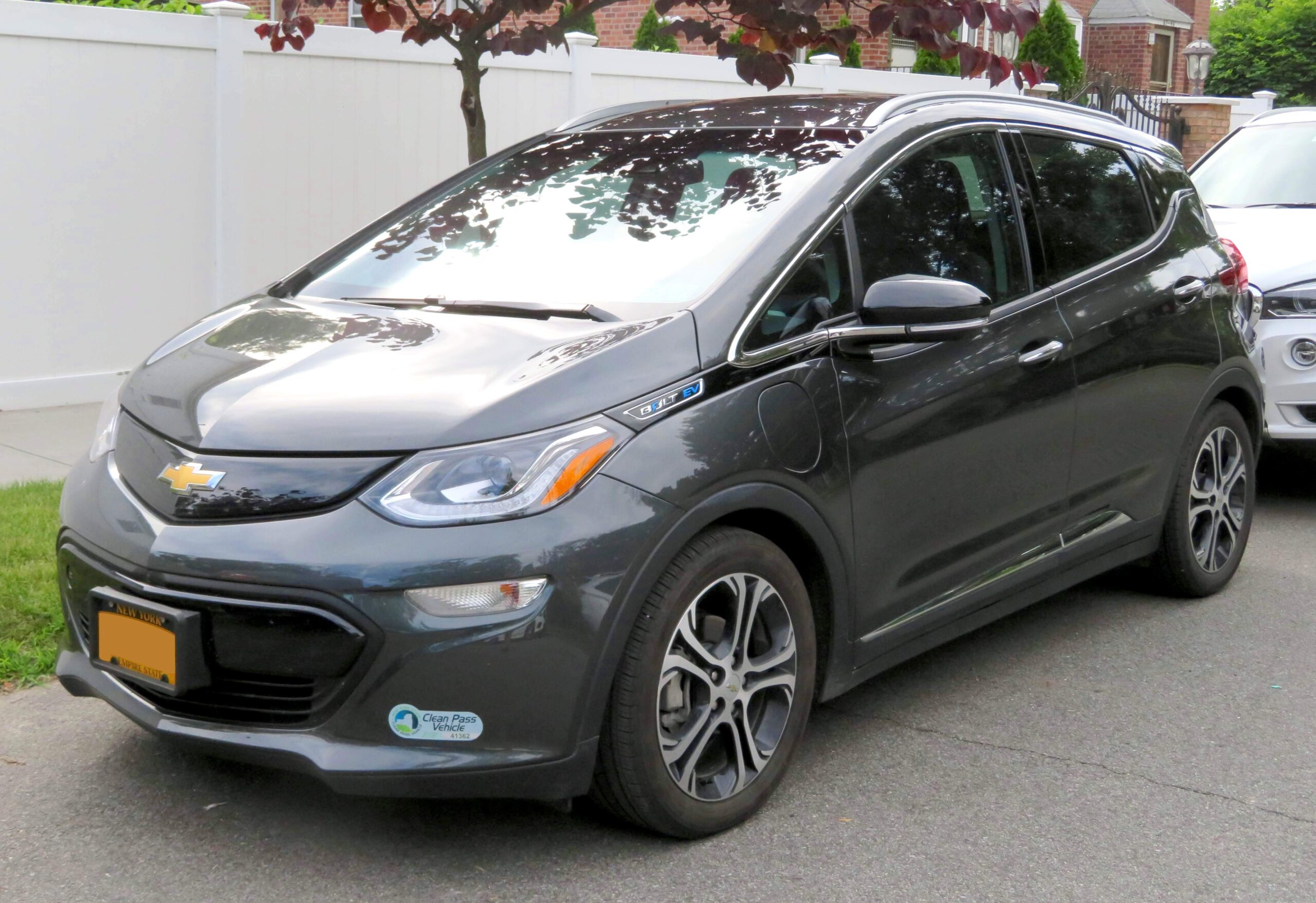
1. **Chevrolet Bolt**The Chevrolet Bolt, General Motors’ entrant into the affordable electric vehicle market, initially garnered praise for its respectable range and accessible price point. Many saw it as a compelling option for those looking to transition to electric mobility without breaking the bank. However, beneath this promising exterior lay a series of significant and deeply concerning problems that quickly soured the ownership experience for many.
The most infamous and critical issue plaguing the Bolt concerned its battery. Lithium-ion batteries, specifically those manufactured by LG for the Bolt, were found to be prone to short-circuiting, overheating, and, in severe cases, igniting into flames. This alarming defect led to widespread and expensive recalls in 2020 and 2021, shaking consumer confidence and creating a massive headache for owners.
Beyond the serious safety concerns, the Bolt also presented a rather uninspired driving experience. Owners frequently reported that the ride quality was merely “so-so,” lacking the refinement and comfort expected even from an affordable compact car. This translated into a less than ideal daily commute, contributing to disappointment among drivers.
Furthermore, the vehicle’s interior dimensions and overall handling left much to be desired. The space allocated for rear passengers was often deemed inadequate, making it less practical for families or regular carpooling. Combined with handling characteristics described as only “so-so,” the Bolt struggled to offer a truly engaging or even consistently pleasant driving dynamic, pushing many owners to regret their initial purchase as the cumulative frustrations mounted.
Car Model Information: 2022 Chevrolet Bolt EUV FWD LT
Name: Chevrolet Bolt EV
Caption: 2022 Chevrolet Bolt EV
Manufacturer: General Motors
Production: unbulleted list
ModelYears: unbulleted list
Class: Subcompact car
BodyStyle: hatchback
Layout: Front-engine, front-wheel-drive layout
Predecessor: Chevrolet Spark EV
Categories: 2020s cars, All Wikipedia articles in need of updating, All articles containing potentially dated statements, All articles with unsourced statements, Articles containing potentially dated statements from February 2018
Summary: The Chevrolet Bolt EV (marketed in Europe as Opel Ampera-e) is a battery electric subcompact hatchback manufactured and marketed by General Motors under its Chevrolet brand from late 2016 until late 2023, with a brief hiatus between mid-2021 and early 2022.
The first-generation Bolt was developed and manufactured with LG Corporation. Sales of the 2017 Bolt began in California in December 2016; it was released nationwide and international markets release in 2017. A rebadged European variant was marketed as the Opel Ampera-e in mainland Europe. In 2017, the Bolt was the second-best-selling plug-in car in the United States. It was named the 2017 Motor Trend Car of the Year, the 2017 North American Car of the Year, an Automobile magazine 2017 All Star, and was listed in Time magazine’s Best 25 Inventions of 2016. The Ampera-e was discontinued after 2018. By the end of 2020, GM had sold 112,000 Bolt and Ampera-e cars worldwide. The first-generation Bolt had been subject to at least three recalls due to battery fire risks.
In mid-2023, GM officials said they would discontinue the Bolt; after outcry, they announced plans for a next-generation model, which is expected to be revealed in 2025 for model year 2026.
Get more information about: Chevrolet Bolt
Buying a high-performing used car >>>
Brand: Chevrolet Model: Bolt
Price: $22,995 Mileage: 30,332 mi.
Read more about: The 15 Most Disappointing New Cars of 2025: Concrete Data Reveals Which Models to Skip
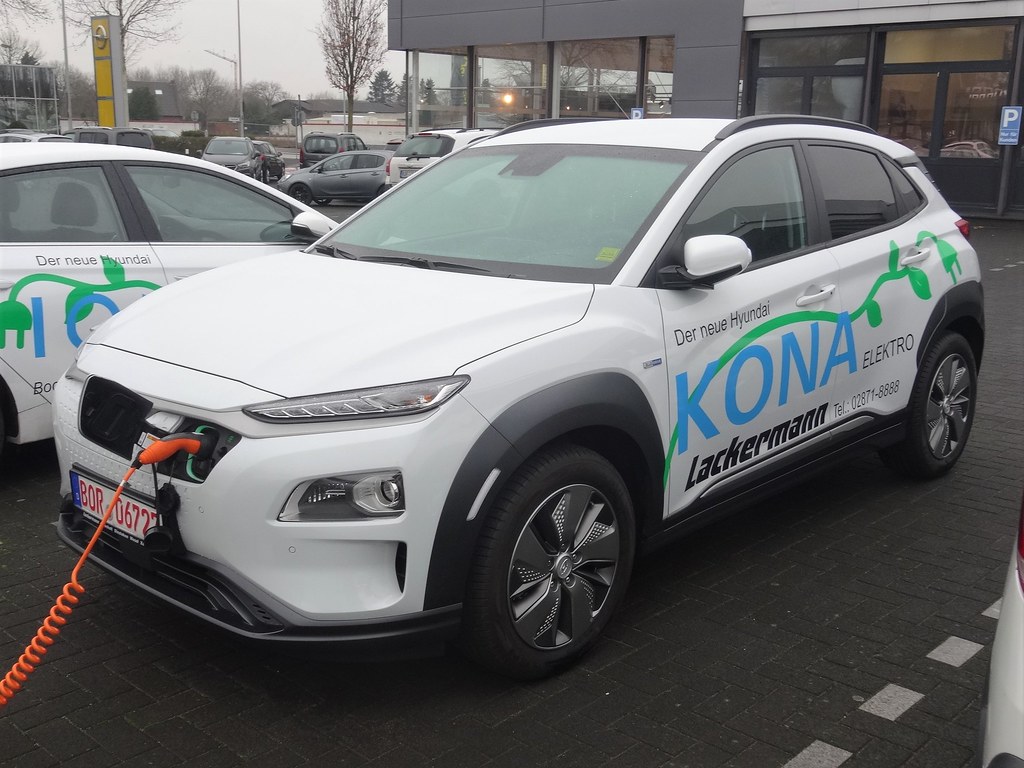
2. **Hyundai Kona Electric**Hyundai has, in recent years, earned considerable acclaim for its innovative and well-received electric vehicles, pushing the boundaries of design and technology. Yet, even successful automakers have their missteps, and the Hyundai Kona Electric stands out as a regrettable example of an EV that promised much but delivered considerable frustration for its owners. It quickly became clear that this model had its share of “clunkers” in the lineup.
Unfortunately, much like its Chevrolet counterpart, the Kona Electric’s history is marred by critical battery-related issues, including battery fires and subsequent large-scale recalls. In 2020 and 2021, Hyundai was compelled to issue a worldwide recall to address these fire risks, necessitating the replacement of battery packs in affected vehicles. This created significant inconvenience for owners and cast a shadow over the brand’s EV reliability.
While the battery problems were certainly paramount, they represented just “the tip of the iceberg” when it came to the Kona Electric’s overall drawbacks. The phrase “buyer beware!” succinctly captured the sentiment among many who discovered a broader range of issues after purchase. These extended beyond the headline-grabbing fire risks, impacting the overall usability and long-term satisfaction of the vehicle.
Such widespread and serious concerns inevitably contribute to a rapid depreciation in value. When a vehicle faces fundamental safety and reliability questions, its appeal to the secondhand market diminishes dramatically, making it a challenging and financially painful experience for original owners when it comes time to sell or trade in. This makes the Kona Electric a prime example of a car that, despite its initial promise, leaves a lasting impression of regret.
Car Model Information: 2024 Volkswagen Tiguan 2.0T S
Name: Hyundai Kona
Caption: Hyundai Kona N Line (SX2)
Manufacturer: Hyundai Motor Company
Aka: Hyundai Kauai (Portugal)
Production: 2017–present
ModelYears: 2018–present
Class: Subcompact crossover SUV
BodyStyle: SUV
Layout: ubl
Categories: 2020s cars, All-wheel-drive vehicles, All Wikipedia articles in need of updating, All Wikipedia articles written in British English, Articles containing Chinese-language text
Summary: The Hyundai Kona (Korean: 현대 코나) is a subcompact crossover SUV produced by the South Korean manufacturer Hyundai. The first-generation Kona debuted in June 2017 and the production version was revealed later that year. It is positioned between the Venue or Bayon and the Tucson in Hyundai crossover SUV line-up. The battery electric version called the Kona Electric (or Kona EV) was first launched in South Korea during the first half of 2018 and rolled out gradually worldwide afterwards.
Get more information about: Hyundai Kona
Buying a high-performing used car >>>
Brand: Hyundai Model: Kona Electric
Price: $22,491 Mileage: 42,675 mi.
Read more about: Critical Car Choices: 14 New & Older Models to Avoid for Lasting Buyer’s Remorse
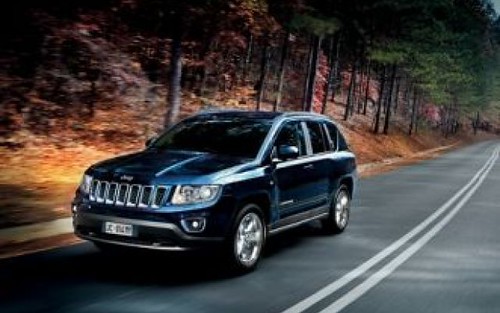
3. **Jeep Compass**The Jeep Compass, marketed as a compact SUV, was designed to blend the rugged appeal of the Jeep brand with everyday practicality. However, for a significant number of owners across various model years, this vision failed to materialize, instead delivering a vehicle riddled with persistent and deeply frustrating problems. Choosing this SUV, many found, was akin to inviting “a migraine headache on wheels” into their lives.
One of the most frequently cited complaints centered on its transmission systems. Both its continuously variable transmission (CVT) and 9-speed automatic transmissions were notoriously problematic, with owners reporting “herky-jerky shifting” and even catastrophic failure. These transmission issues not only compromised the driving experience but also led to expensive repairs, undermining the vehicle’s reliability and increasing the cost of ownership.
Beyond the transmission woes, the Jeep Compass was also afflicted by a range of other performance and mechanical deficiencies. Owners often grappled with “poor engine performance,” which translated into a less responsive and often underpowered driving experience. This was often exacerbated by “excessive oil consumption,” adding maintenance hassle and expense to an already challenging ownership.
Adding to the list of grievances were “electrical system issues,” which can manifest in a multitude of unpredictable and inconvenient ways, from malfunctioning infotainment systems to more critical operational failures. Such a comprehensive array of problems, touching on core components like the engine, transmission, and electricals, ultimately led many to regret their purchase, wishing they had “steered clear of this SUV” from the outset.
Car Model Information: 2020 Jeep Cherokee Latitude Plus
Name: Jeep Compass
Caption: 2019 Jeep Compass
Manufacturer: Jeep
Production: 2006–present
ModelYears: 2007–present
Class: Compact crossover SUV
BodyStyle: SUV
Layout: Front-engine, front-wheel-drive layout
Chassis: Unibody
Categories: 2010s cars, 2020s cars, All-wheel-drive vehicles, All Wikipedia articles written in American English, Articles with short description
Summary: The Jeep Compass is a compact crossover SUV, introduced in 2006 for the 2007 model year. The first generation Compass and Patriot, its rebadged variant, were among Jeep’s first crossover SUVs. The second-generation Compass debuted in September 2016 in Brazil and at the Los Angeles International Auto Show in November 2016, sharing a modified platform with the Renegade. It is positioned between the smaller Renegade and the larger Cherokee globally or the Commander in South America. The third-generation Compass debuted in May 2025, built on the STLA Medium by Stellantis, shared with other PSA Groupe vehicles.
Get more information about: Jeep Compass
Buying a high-performing used car >>>
Brand: Jeep Model: Compass
Price: $15,980 Mileage: 96,780 mi.
Read more about: Kylie Jenner: Unpacking Her Empire, Influence, & Style Evolution That Totally Suits Her
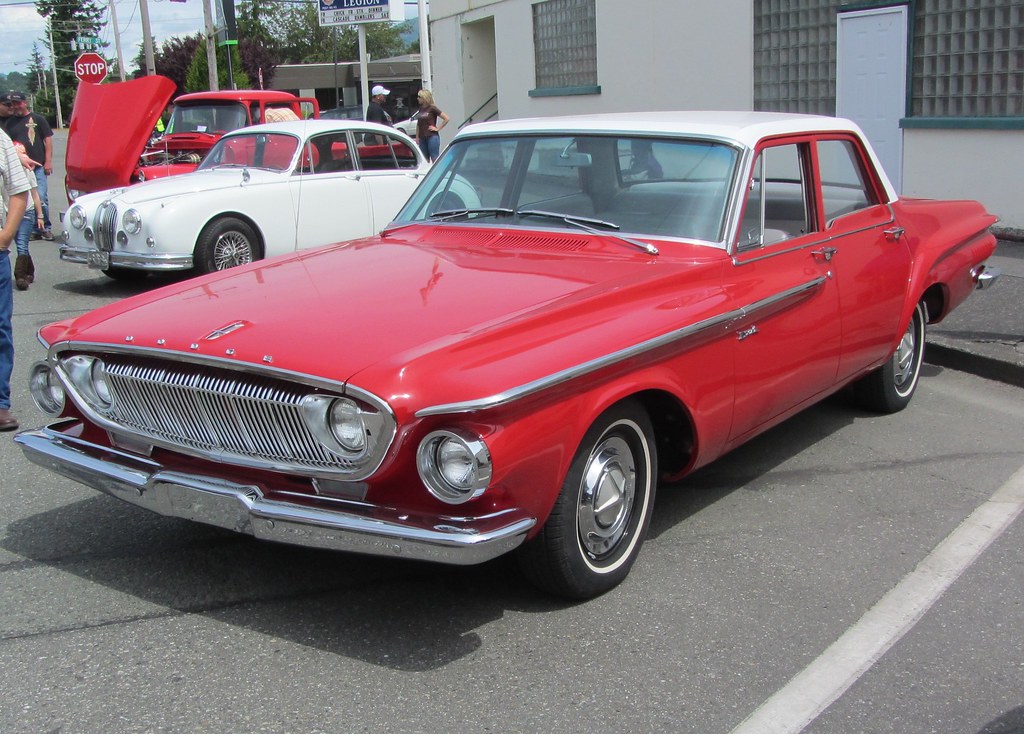
4. **Dodge Dart**The Dodge Dart, intended as a modern compact sedan, regrettably became synonymous with “full-size car problems” in a package that struggled to deliver on its foundational promises. What might have appeared as an attractive, affordable option quickly revealed itself fraught with issues, leaving a substantial portion of buyers with profound buyer’s remorse.
Indeed, the problems afflicting the Dodge Dart spanned virtually every critical component of the vehicle. From the intricate workings of its transmission to the fundamental performance of its engine, and extending to the crucial safety and comfort aspects of its suspension and brakes, owners reported a continuous stream of malfunctions. This holistic unreliability meant that very few parts of the Dart’s ownership experience were truly trouble-free.
The widespread dissatisfaction among Dart owners was starkly illustrated by data from Consumer Reports, which indicated that “around six in 10 buyers say they are not satisfied with the vehicle.” This high percentage indicates a vehicle that fundamentally failed to meet expectations, whether in performance, reliability, or ownership costs. Such a statistic paints a clear picture of regret.
Ultimately, the Dodge Dart stands as a potent reminder that initial affordability can often mask deeper, more expensive problems. The cumulative effect of its pervasive mechanical and structural flaws led countless owners to wish they had “never bought” this particular compact sedan, making it a case study in why meticulous research into long-term reliability is paramount before committing to a purchase.
Car Model Information: 2015 Dodge Dart SXT
Name: Dodge Dart
Caption: 1966 Dodge Dart GT 2-door hardtop
Manufacturer: Dodge
Production: 1959–1976 (US market)
ModelYears: 1960–1976 (US market)
Class: Full-size
Layout: FR layout
Predecessor: Dodge Coronet#Fourth generation (1957–1959)
Related: Plymouth Valiant,Chrysler Valiant,Dodge Phoenix
Successor: Dodge Aspen,Dodge Diplomat,Talbot Tagora
Categories: 1970s cars, All articles with unsourced statements, Articles with short description, Articles with unsourced statements from December 2023, Articles with unsourced statements from May 2025
Summary: The Dodge Dart is a line of passenger cars produced by Dodge from the 1959 to 1976 model years in North America, with production extended to later years in various other markets.
The production Dodge Dart was introduced as a lower-priced full-size model in 1960 and 1961, but became a mid-size car for one model year for 1962, and was then reduced to a compact for two generations, from 1963 to 1976.
Chrysler had first used ‘Dart’ name plates on two Italian styled show cars, in 1956 and 1957, before it became a Dodge model name. The Dart nameplate was resurrected for a Fiat-derived compact car that was introduced in 2012.
Get more information about: Dodge Dart
Buying a high-performing used car >>>
Brand: Dodge Model: Dart
Price: $9,995 Mileage: 143,082 mi.
Read more about: Critical Car Choices: 14 New & Older Models to Avoid for Lasting Buyer’s Remorse
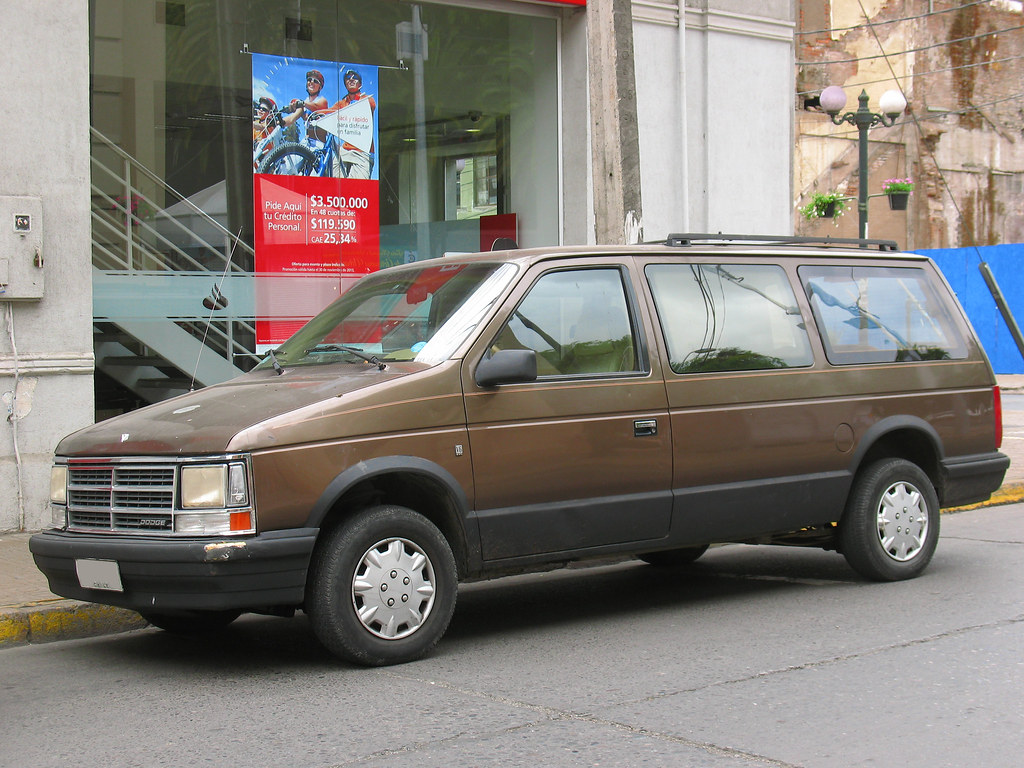
5. **Dodge Grand Caravan**For many families across America, the Dodge Grand Caravan has historically played a central role in countless memories, serving as the quintessential hauler for children, pets, and all manner of belongings. Yet, beneath these nostalgic associations, a harsh reality exists: these minivans were “anything but smooth driving,” often proving to be unreliable and frustrating companions on the road, leading to a significant degree of buyer’s regret.
The most common and debilitating complaint from Grand Caravan owners revolved around “transmission failure,” undermining its reliability as a family vehicle. The prospect of such a major mechanical breakdown made long journeys and daily errands a source of anxiety rather than convenience for many.
Moreover, the transmission issues often did not manifest suddenly. Before a complete breakdown, owners frequently experienced a litany of warning signs, including “delayed gear engagement,” “rough shifting,” and a disconcerting sense of “slipping.” These symptoms indicated impending failure, making the driving experience unpleasant and unpredictable, eroding confidence.
Compounding these significant powertrain problems, many owners also reported persistent “electrical system problems” and troubling instances of “heavy oil consumption.” These additional issues contributed to a high cost of ownership and frequent trips to the repair shop. It’s no wonder that a considerable number of owners, given the chance to “rewind time and have a do-over,” would “gladly choose something else” over the Dodge Grand Caravan.
Car Model Information: 2024 Volkswagen Tiguan 2.0T S
Caption: 2011 Dodge Grand Caravan Mainstreet
Name: Dodge Grand Caravan
Manufacturer: Chrysler Corporation,Daimler AG,Chrysler LLC,Chrysler Group LLC,FCA US LLC
Class: Minivan
Layout: FF layout,F4 layout
Production: November 2, 1983 –August 21, 2020
ModelYears: 1984–2020
Related: Plymouth Voyager,Chrysler Town & Country (minivan),Dodge Mini Ram,Chrysler Voyager,Volkswagen Routan
Assembly: Windsor, Ontario,Fenton, Missouri,Fenton, Missouri,Fuzhou
Successor: Dodge Journey,Chrysler Voyager
Categories: All-wheel-drive vehicles, All articles with unsourced statements, Articles with short description, Articles with unsourced statements from December 2017, Articles with unsourced statements from May 2009
Summary: The Dodge Caravan is a series of minivans manufactured by Chrysler from the 1984 through 2020 model years. The Dodge version of the Chrysler minivans, was marketed as both a passenger van and a cargo van (the only version of the model line offered in the latter configuration). For 1987, the model line was joined by the long-wheelbase Dodge Grand Caravan. Produced in five generations across 36 model years, the Dodge Caravan is the second longest-lived Dodge nameplate (exceeded only by the Dodge Charger). Initially marketed as the Dodge counterpart of the Plymouth Voyager, the Caravan was later slotted between the Voyager and the Chrysler Town & Country. Following the demise of Plymouth, the model line became the lowest-price Chrysler minivan, ultimately slotted below the Chrysler Pacifica.
Sold primarily in the United States and Canada, the Dodge Caravan was also marketed in Europe and other international markets under the Chrysler brand (as the Chrysler Voyager or Chrysler Caravan). From 2008 onward, Dodge marketed the model line only as the Grand Caravan; Ram Trucks sold a cargo-only version of the model line as the Ram C/V Tradesman. The model line was also rebranded as the Volkswagen Routan from 2009 through 2014.
After the 2020 model year, the Dodge Grand Caravan was discontinued, ending production on August 21, 2020. For 2021 production, the Grand Caravan nameplate was moved to Chrysler, which used it for a Canadian-market version of the Chrysler Pacifica (in the United States, the exact vehicle was marketed as the Chrysler Voyager).
For its entire production run, the Dodge Caravan/Grand Caravan was manufactured by Chrysler Canada (now Stellantis Canada) at its Windsor Assembly facility (Windsor, Ontario). From 1987 until 2007, the model line was also manufactured by Chrysler at its Saint Louis Assembly facility (Fenton, Missouri). Since their introduction in late 1983, over 14.6 million Chrysler minivans have been sold worldwide (including export versions and versions sold through rebranding).
Get more information about: Dodge Caravan
Buying a high-performing used car >>>
Brand: Dodge Model: Grand Caravan
Price: $22,491 Mileage: 42,675 mi.
Read more about: Critical Car Choices: 14 New & Older Models to Avoid for Lasting Buyer’s Remorse

6. **Nissan Sentra**The Nissan Sentra, like many long-standing vehicle models, has seen its share of both good and bad iterations throughout its production history. However, certain model years stand out as particularly egregious examples of what to avoid, with those manufactured “from 2013 to 2019” being unequivocally described as “horrific” by a significant number of owners due to their pervasive issues.
At the heart of the Sentra’s troubles during this period was the “infamous CVT” (Continuously Variable Transmission). This specific transmission became “a thorn in the side of many Sentra owners,” notorious for frustrating operational problems. These included alarming instances of “overheating,” erratic “jerky acceleration,” and persistent “shuddering,” all of which severely compromised the driving experience and the vehicle’s long-term reliability.
Beyond the critical transmission defects, the list of the Sentra’s issues was extensive. Owners frequently encountered problems with “engine stalling,” a potentially dangerous and certainly inconvenient malfunction. The vehicle was also subject to numerous recalls, affecting vital safety components like “airbags, seatbelts, brakes, and more,” highlighting manufacturing and design flaws.
These accumulated problems meant that while the Sentra might have appealed to budget-conscious buyers, the initial savings were often quickly overshadowed by repair costs and safety concerns. The unreliability and consistent stream of complaints from owners firmly placed these particular model years of the Nissan Sentra on the list of cars that buyers ultimately came to regret purchasing, demonstrating a clear case of value plummeting due to inherent flaws.
Read more about: Beyond the Showroom Shine: 15 New Cars Experts Warn You to Avoid in 2024 Due to Pervasive Reliability Concerns
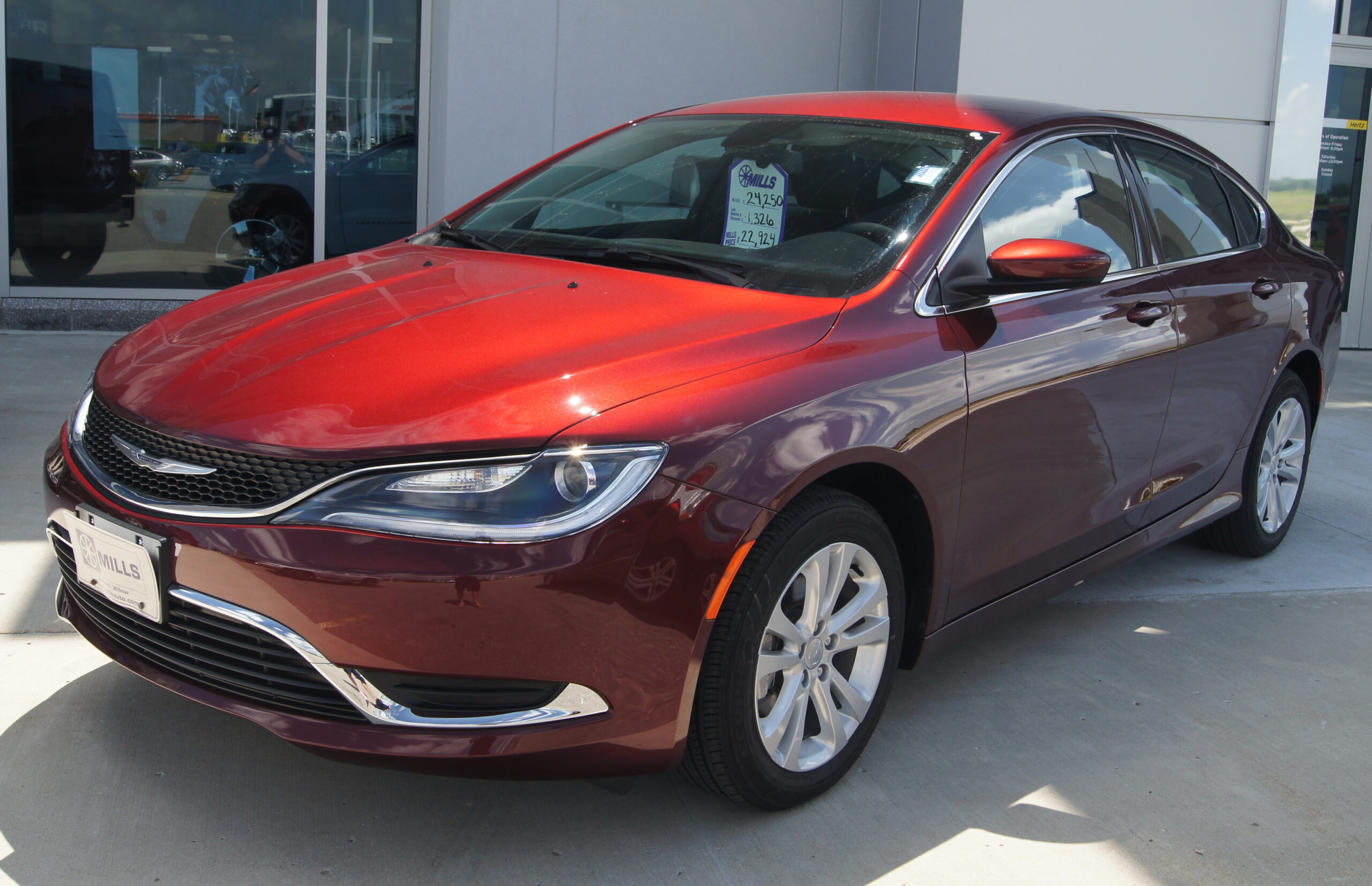
7. **Chrysler 200**The Chrysler 200, produced between 2011 and 2017, was intended to be a competitive mid-size sedan, but it quickly became synonymous with a litany of “many reliability issues.” Owners often grappled with mechanical and performance problems that severely undermined their satisfaction, making the car a source of financial regret.
A significant portion of the Chrysler 200’s problems revolved around its transmission, particularly for the later models. Owners of the “2015, 2016, and 2017 models” found the “9-speed automatic tranny to be especially problematic.” This issue was not merely an inconvenience; it was a precursor to more severe outcomes, often leading directly to “transmission failure,” a costly and debilitating mechanical breakdown for any vehicle.
These transmission woes were, unfortunately, “just for starters” for many Chrysler 200 owners. The vehicle also suffered from persistent “engine performance problems,” which could manifest in various ways, from reduced power and acceleration to rough idling and other operational inefficiencies. Such fundamental issues with the engine and transmission created a double blow to dependability and appeal.
The brand Chrysler itself, as noted in broader market analysis, “suffers from some of the fastest value drops in the American market,” with buyers citing “concerns over outdated designs, mixed reliability scores, and low brand appeal.” The Chrysler 200 exemplified these brand-level issues, combining significant mechanical failures with a generally unfavorable market perception, cementing its place as a car many buyers came to regret.
Continuing our deep dive into vehicles that have left owners wishing for a do-over, we shift our focus to more models notorious for plummeting values and persistent issues. These aren’t just isolated incidents; they represent patterns of design flaws, manufacturing shortcomings, and market mismatches that can turn an exciting purchase into a significant financial burden. Understanding these patterns is key to avoiding similar pitfalls in your next automotive investment.
Car Model Information: 2013 Chrysler 200 Touring
Name: Chrysler 200
Manufacturer: Chrysler
Production: 2010–2016
ModelYears: 2011–2017
Assembly: Sterling Heights, Michigan
Class: Mid-size car
Sp: us
Predecessor: Chrysler Sebring
Categories: 2010s cars, All articles with dead external links, All articles with unsourced statements, Articles with dead external links from July 2020, Articles with permanently dead external links
Summary: The Chrysler 200 is a mid-size sedan that was manufactured and marketed by Chrysler from model years 2011 to 2017 across two generations in four-door sedan and two-door convertible (first generation only) body styles.
The 200 nameplate debuted on the 200C, a prototype hybrid vehicle shown at the 2009 North American International Auto Show in Detroit and based on the Chrysler 300. The 200C concept was engineered to accept either traditional gasoline, hybrid or full-electric powertrains.
Get more information about: Chrysler 200
Buying a high-performing used car >>>
Brand: Chrysler Model: 200
Price: $7,995 Mileage: 117,030 mi.
Read more about: Beyond the Headlines: An In-Depth Look at Madonna’s Iconic Journey Through Music, Film, and Cultural Evolution

8. **Nissan Altima**Another car that frequently appears on lists of regrettable purchases is the Nissan Altima. Much like the Sentra, a significant portion of the Altima’s buyer dissatisfaction, particularly in the 2013 to 2019 model years, stems from its continuously variable transmission (CVT). This problematic transmission is often cited for its unreliability and poor driving dynamics, creating a frustrating ownership experience that ultimately impacts the car’s long-term value.
Beyond the well-documented CVT woes, Altima owners have also reported a range of other concerning issues. Problems with the steering system can lead to a less responsive and unsettling driving feel, while excessive oil consumption and oil leaks contribute to higher maintenance costs and potential mechanical damage. These cumulative issues underscore why many owners express regret, finding their initial investment quickly overshadowed by repair expenses and diminished resale appeal.
When a vehicle struggles with such fundamental mechanical and operational problems, its appeal to the secondhand market naturally diminishes. The combination of a notoriously unreliable transmission and other significant mechanical flaws makes the Nissan Altima a challenging car to own and an even harder one to sell for a respectable price. This rapid depreciation firmly places it on our list of cars to approach with extreme caution.
Car Model Information: 2023 Nissan Altima SR FWD
Name: Nissan Altima
Caption: 2024 Nissan Altima SR (L34; US)
Manufacturer: Nissan
Aka: Nissan Bluebird
Production: 1992–present
Class: Compact car
Predecessor: Nissan Bluebird,Nissan Stanza
ModelYears: 1993–present
Categories: 2000s cars, 2010s cars, 2020s cars, All-wheel-drive vehicles, All Wikipedia articles written in American English
Summary: The Nissan Altima is a mid-size car manufactured by Nissan since 1992. It is a continuation of the Nissan Bluebird line, which began in 1955.
The Altima has historically been larger, more powerful, and more luxurious than the Nissan Sentra but less so than the Nissan Maxima. The first through fourth-generation cars were manufactured exclusively in the United States and officially sold in North and South America, along with the Middle East and Australia. For other markets, Nissan sold a related mid-size sedan called the Nissan Teana which was between the Altima and Maxima in terms of size. In 2013, the Teana became a rebadged version of the fifth-generation Altima.
The name “Altima” was originally applied to a top trim line of the Nissan Leopard for the Japanese market in 1986, and then to the Nissan Laurel Altima mid-size car sold in Central America and the Caribbean before 1992. In 1992, Nissan discontinued the Stanza which was a Nissan Bluebird clone, replacing it with the US-built Altima, while remaining a compact car. The first Altima was produced in June 1992, as a 1993 model. All Altima models for the North American market were built in Smyrna, Tennessee, until June 2004, when Nissan’s Canton, Mississippi plant also began producing the model to meet high demand.
Get more information about: Nissan Altima
Buying a high-performing used car >>>
Brand: Nissan Model: Altima
Price: $22,999 Mileage: 26,080 mi.
Read more about: Unveiling the Unseen: Masterful Hidden Messages and Ingenious Features, From Automotive Marvels to Clever Campaigns
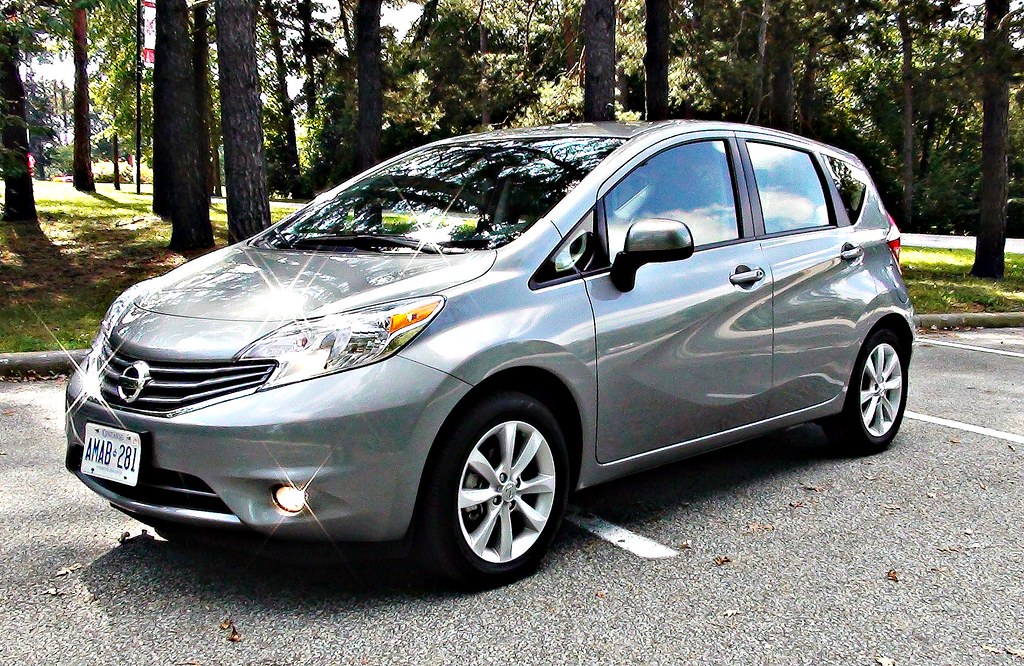
9. **Nissan Versa Note**Marketed as a super-cheap small hatchback, the Nissan Versa Note’s initial low price often directly mirrors its questionable quality level. While it might seem like an attractive entry point into car ownership, many buyers soon discover that this affordability comes with a heavy long-term cost in terms of frustration and rapidly declining value. It’s a classic example of getting what you pay for, often to your detriment.
Central to the Nissan Versa Note’s owner dissatisfaction is, once again, its transmission. The CVT in this model frustrated owners to no end, often failing to deliver smooth power delivery and proving unreliable over time. This primary mechanical issue profoundly impacts the driving experience, turning everyday commutes into a source of constant irritation rather than efficient transport.
Compounding the transmission problems is the vehicle’s anemic acceleration, derived from its modest 1.6-liter 4-cylinder engine. This lack of power, coupled with the temperamental CVT, means the Versa Note struggles to keep up in many driving situations, leading to an unsatisfying and often underperforming experience. The initial savings from its low purchase price are quickly eroded by these persistent operational issues and its steep depreciation.
Car Model Information: 2024 Volkswagen Tiguan 2.0T S
Categories: All set index articles, Articles with short description, CS1 Mexican Spanish-language sources (es-mx), CS1 Portuguese-language sources (pt), CS1 Spanish-language sources (es)
Summary: Nissan Versa is an automobile nameplate used by the Japanese manufacturer Nissan in the Americas for the following models:
According to a Nissan press release in 2008, “versa” is short for “versatile space” meant to imply the spaciousness of the interior and configurable cargo arrangements.
Get more information about: Nissan Versa
Buying a high-performing used car >>>
Brand: Nissan Model: Versa Note
Price: $22,491 Mileage: 42,675 mi.
Read more about: The Platinum Pain: 15 Luxury Vehicles That Secretly Punish Their Owners with Sky-High Costs
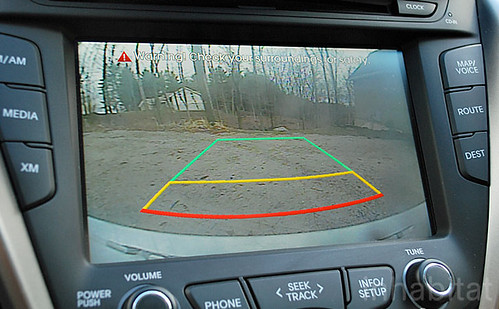
10. **Hyundai Veloster**The Hyundai Veloster initially captured attention with its cool-looking, distinctive styling, unique three-door configuration, and responsive handling, suggesting a sporty and engaging driving experience. However, beneath this appealing exterior, a series of significant problems have proven hard for many owners to ignore, turning a promising purchase into a source of considerable buyer’s remorse.
Among the most critical issues plaguing the Veloster are its engine problems, which in some severe instances, can lead to catastrophic failure. This is a primary concern for any vehicle owner, directly impacting reliability and safety, and leading to expensive, unexpected repairs. Such a fundamental flaw severely undermines any perceived value or enjoyment the car might offer.
Furthermore, the Veloster’s dual-clutch transmission has frequently exhibited issues such as delayed acceleration, noticeable slipping, and jerky shifts. These transmission faults not only detract from the driving enjoyment but also raise serious questions about the vehicle’s long-term durability. Adding to this laundry list of grievances are persistent suspension and steering problems, completing a picture of a car that, despite its looks, struggles with core mechanical integrity.
Car Model Information: 2013 Hyundai Veloster Base
Name: Hyundai Veloster
Manufacturer: Hyundai Motor Company
Production: 2011–2022
Class: Sport compact car
Layout: Front-engine, front-wheel-drive layout
BodyStyle: hatchback
Predecessor: Hyundai Tiburon
ModelYears: 2012–2022
Assembly: Ulsan
Categories: All Wikipedia articles in need of updating, All articles with unsourced statements, Articles containing Korean-language text, Articles with short description, Articles with unsourced statements from May 2018
Summary: The Hyundai Veloster (Korean: 현대 벨로스터, romanized: Hyeondae Belloseuteo) is a compact car first produced in 2011 by Hyundai, with sales beginning in South Korea on March 10, 2011, and in Canada and the United States since the fall of 2011. In South Korea, it was marketed under Hyundai’s ‘Premium Youth Lab’. It was unveiled on January 10, 2011, at the Detroit Auto Show, and fills the void left when Hyundai discontinued the Hyundai Tiburon after the 2008 model year.
The car differs from most other hatchbacks with its asymmetrical door configuration, featuring one large door on the driver side and two smaller doors on the passenger side. This configuration is more common on commercial vehicles and minivans.
Get more information about: Hyundai Veloster
Buying a high-performing used car >>>
Brand: Hyundai Model: Veloster
Price: $9,991 Mileage: 73,577 mi.
Read more about: Critical Car Choices: 14 New & Older Models to Avoid for Lasting Buyer’s Remorse
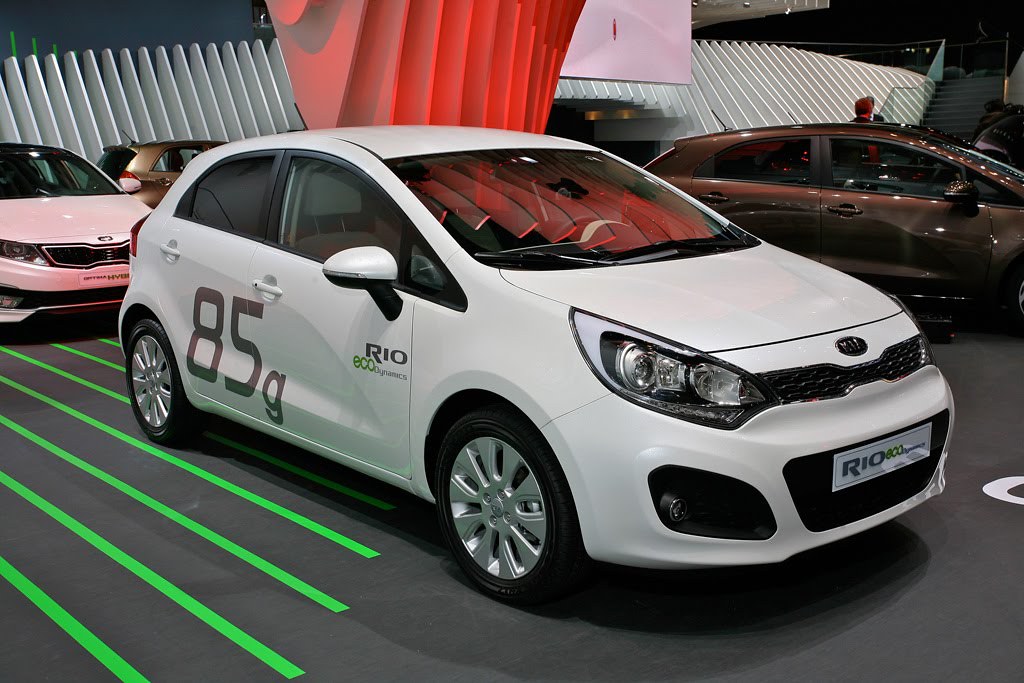
11. **Kia Rio**Owners of the Kia Rio have also found themselves experiencing their fair share of buyer’s remorse. While the vehicle is often lauded for its affordability and fuel efficiency, these positive attributes are frequently overshadowed by a troubling reputation for persistent engine issues. It’s a stark reminder that a low sticker price doesn’t always equate to long-term savings or satisfaction.
The most commonly reported engine problems in the Kia Rio include rough idling and misfires, which are typically attributed to malfunctions with the spark plugs or ignition coils. These issues can lead to diminished performance, increased fuel consumption, and the need for frequent and often unexpected trips to the repair shop, all of which erode the vehicle’s initial value proposition.
Beyond the mechanical frustrations, owners also frequently complain about the cheap interior quality and comfort issues. Over time, the everyday experience of driving a Kia Rio can become less about efficiency and more about enduring its shortcomings. This combination of reliability concerns and a less-than-premium feel contributes significantly to its rapid depreciation, making it a challenging car to resell without substantial financial loss.
Car Model Information: 2023 Kia Rio S
Name: Kia Rio
Caption: Fourth generation Kia Rio
Manufacturer: Kia
Aka: Kia Pride (2005–2017),Kia K2 (China; 2011–2020)
Production: November 1999 – December 2023
ModelYears: 2001–2023 (North America)
BodyStyle: hatchback
Class: Subcompact car
Layout: Front-engine, front-wheel-drive layout
Predecessor: Kia Pride,Kia Avella
Successor: Kia K3 (BL7),Kia Soluto
Categories: 2000s cars, 2010s cars, Articles containing Korean-language text, Articles with short description, CS1 Croatian-language sources (hr)
Summary: The Kia Rio (Korean: 기아 리오) is a subcompact car manufactured by Kia from 1999 to 2023. Body styles have included a three and five-door hatchback and four-door sedan, equipped with inline-four gasoline and diesel engines, and front-wheel drive.
The Rio replaced the first generation Pride—a rebadged version of the Ford Festiva—and the Avella, a subcompact sold as a Ford in some markets. A second generation was introduced in 2005 in Europe and in 2006 in North America, sharing its platform with the Hyundai Accent, a subcompact manufactured by its sister Hyundai Motor Company in South Korea.
In August 2023, the K3 was introduced as its successor in several markets such as Mexico and the GCC countries.
Get more information about: Kia Rio
Buying a high-performing used car >>>
Brand: Kia Model: Rio
Price: $16,385 Mileage: 22,509 mi.
Read more about: Rosa Roisinblit: A Century of Unyielding Truth-Seeking in Argentina’s Darkest Hour
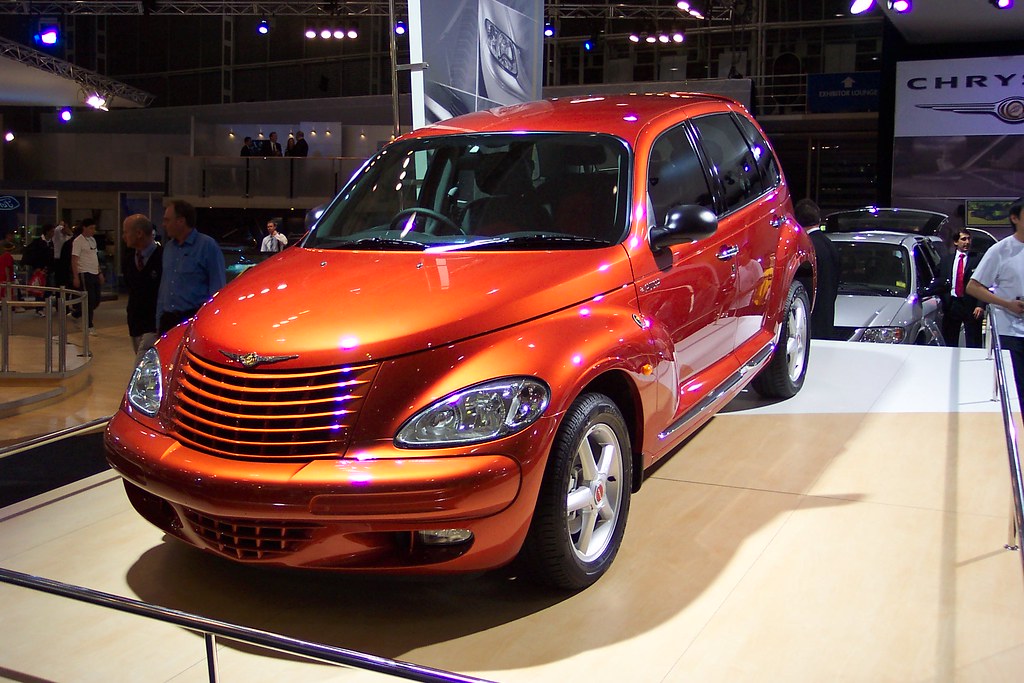
12. **Chrysler PT Cruiser**The Chrysler PT Cruiser, with its distinctive retro styling, has always been a car that people either loved or loved to hate. However, its aesthetic divisiveness was far from the only problem buyers encountered. Beneath its unique facade lay a host of pervasive mechanical issues that cemented its place as a vehicle many owners wished they had never purchased.
One of the most significant areas of concern for PT Cruiser owners revolved around its engine. The vehicle was plagued with engine issues galore, ranging from frustrating stalling and rough idling to more severe problems like overheating and even head gasket failure. These widespread engine defects made for an unreliable and costly ownership experience, frequently requiring extensive and expensive repairs.
Adding to the PT Cruiser’s woes were persistent transmission and electrical problems. Such a comprehensive array of fundamental mechanical and system failures meant that owners often faced a continuous cycle of repairs and breakdowns. Ultimately, these reliability issues far outweighed any nostalgic appeal its styling might have had, leaving owners with significant buyer’s regret and a car that struggled to retain any meaningful value.
Car Model Information: 2024 Volkswagen Tiguan 2.0T S
Name: Chrysler PT Cruiser
Manufacturer: Chrysler
ModelCode: PT,PG
Production: 2000–2010
ModelYears: 2001–2010
Assembly: Toluca, Mexico State
Designer: Bryan Nesbitt
Class: Compact car
BodyStyle: convertible
Platform: Chrysler PT platform
Related: Dodge SRT4,Dodge Neon
Predecessor: Dodge Neon
Successor: Dodge Caliber
Layout: Front-engine, front-wheel-drive layout
Engine: ubl
Transmission: Ultradrive#40TE
Wheelbase: 103 in
Abbr: on
Length: 168.8 in
Width: 67.1 in
Height: 63 in
Weight: 3123 lb
Categories: 2010s cars, All articles with unsourced statements, Articles with short description, Articles with unsourced statements from March 2018, Cars discontinued in 2010
Summary: The Chrysler PT Cruiser is a compact car that was built by the American company Chrysler from 2001 until 2010. Introduced as a five-door hatchback wagon, a two-door convertible variant was also made from 2005 until 2008.
Originally planned as a Plymouth model, the PT Cruiser was ultimately marketed as a Chrysler when Plymouth was discontinued. Intended to invoke 1930s aesthetics, the exterior of the PT Cruiser was designed by Bryan Nesbitt. The model received an intermediate facelift for the 2006 model year. Interior packaging was noted for its high roof, high h-point seating, and flexible cargo and passenger configurations enabled by a multi-level rear cargo shelf and rear seats a user could fold, tumble, or remove.
The PT Cruiser was produced in Mexico and Austria at the Toluca Car Assembly and Eurostar Automobilwerk factories respectively. By the end of production in July 2010, worldwide production had reached 1.35 million.
In its nameplate, PT stands for “Personal Transport” or “Personal Transportation”. PT was the PT Cruiser’s product code for the Mexican-made units.
Get more information about: Chrysler PT Cruiser
Buying a high-performing used car >>>
Brand: Chrysler Model: PT Cruiser
Price: $22,491 Mileage: 42,675 mi.
Read more about: Beyond Nostalgia: 13 Legendary 1950s Cars Now Commanding Millions on the Collector Market
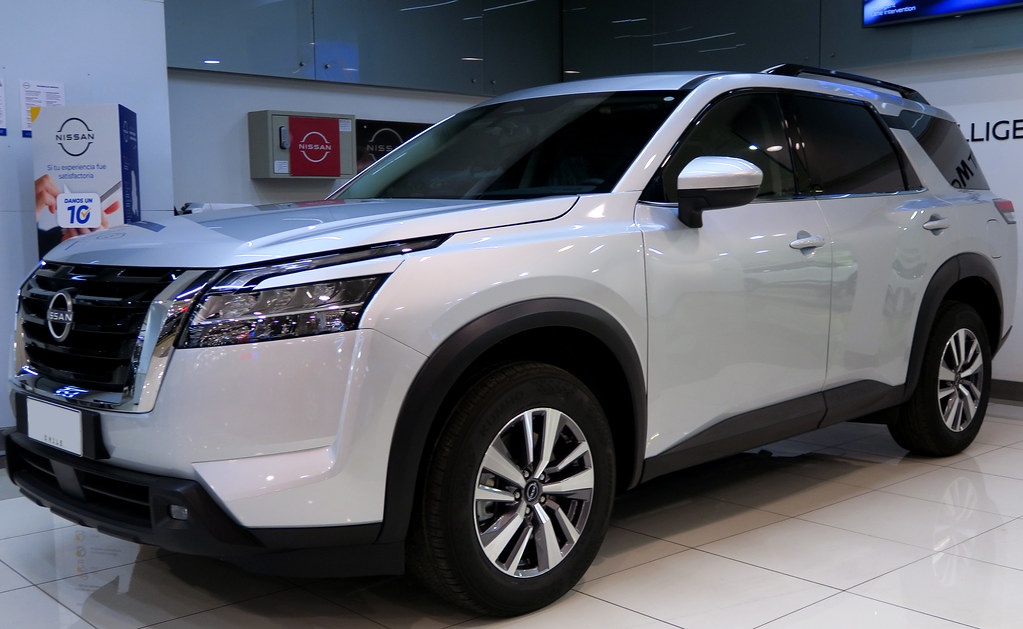
13. **Nissan Pathfinder**The Nissan Pathfinder, despite its popularity as an SUV, has regrettably earned a reputation for having problems that leave owners with profound buyer’s remorse. For a vehicle often chosen for its utility and family-hauling capabilities, reliability is paramount, and the Pathfinder has, for many, fallen short of these expectations.
One of the most contentious issues that Pathfinder owners frequently cite is, predictably, its continuously variable transmission (CVT). This transmission has been a consistent source of frustration, with owners experiencing rough shifting, unsettling shuddering, and even overheating during operation. In numerous cases, these issues have escalated to the point where owners have had to face the costly necessity of replacing the entire transmission.
Beyond the well-documented CVT problems, the Pathfinder also suffers from persistent engine issues and fuel system problems. These additional mechanical flaws contribute to a less reliable and more expensive ownership experience. The cumulative effect of these widespread issues means that despite its market presence, many Pathfinder owners ultimately regret their buying decisions due to the financial and practical burdens imposed by its reliability shortcomings.
Car Model Information: 2023 Nissan Pathfinder Platinum
Name: Nissan Pathfinder
Caption: 2022 Nissan Pathfinder Platinum 4WD (R53, US)
Manufacturer: Nissan
Production: 1985–present
ModelYears: unbulleted list
Layout: unbulleted list
Class: unbulleted list
Chassis: unbulleted list
Predecessor: unbulleted list
Successor: unbulleted list
Categories: 1990s cars, 2000s cars, 2010s cars, 2020s cars, All-wheel-drive vehicles
Summary: The Nissan Pathfinder is a range of sport utility vehicles manufactured by Nissan since 1985. Until the third-generation model, the Pathfinder is based on Nissan’s compact pickup truck platform which it shares with the Navara/Frontier.
The Pathfinder was marketed as the Nissan Terrano (Japanese: 日産・テラノ, Hepburn: Nissan Terano) outside North America. Beginning in 2004, the vehicles were marketed globally as the Pathfinder.
In 2012, the R52 series Pathfinder was released as a three-row crossover SUV based on the unibody Nissan D platform, moving away from the body-on-frame chassis format. The role of a mid-size body-on-frame SUV in Nissan’s global lineup was passed to the Terra/X-Terra, which was released in 2018 and based on the D23 series Navara.
Get more information about: Nissan Pathfinder
Buying a high-performing used car >>>
Brand: Nissan Model: Pathfinder
Price: $37,772 Mileage: 46,270 mi.
Read more about: Understanding Longevity: A Consumer Report on 10 SUVs Built to Last a Lifetime
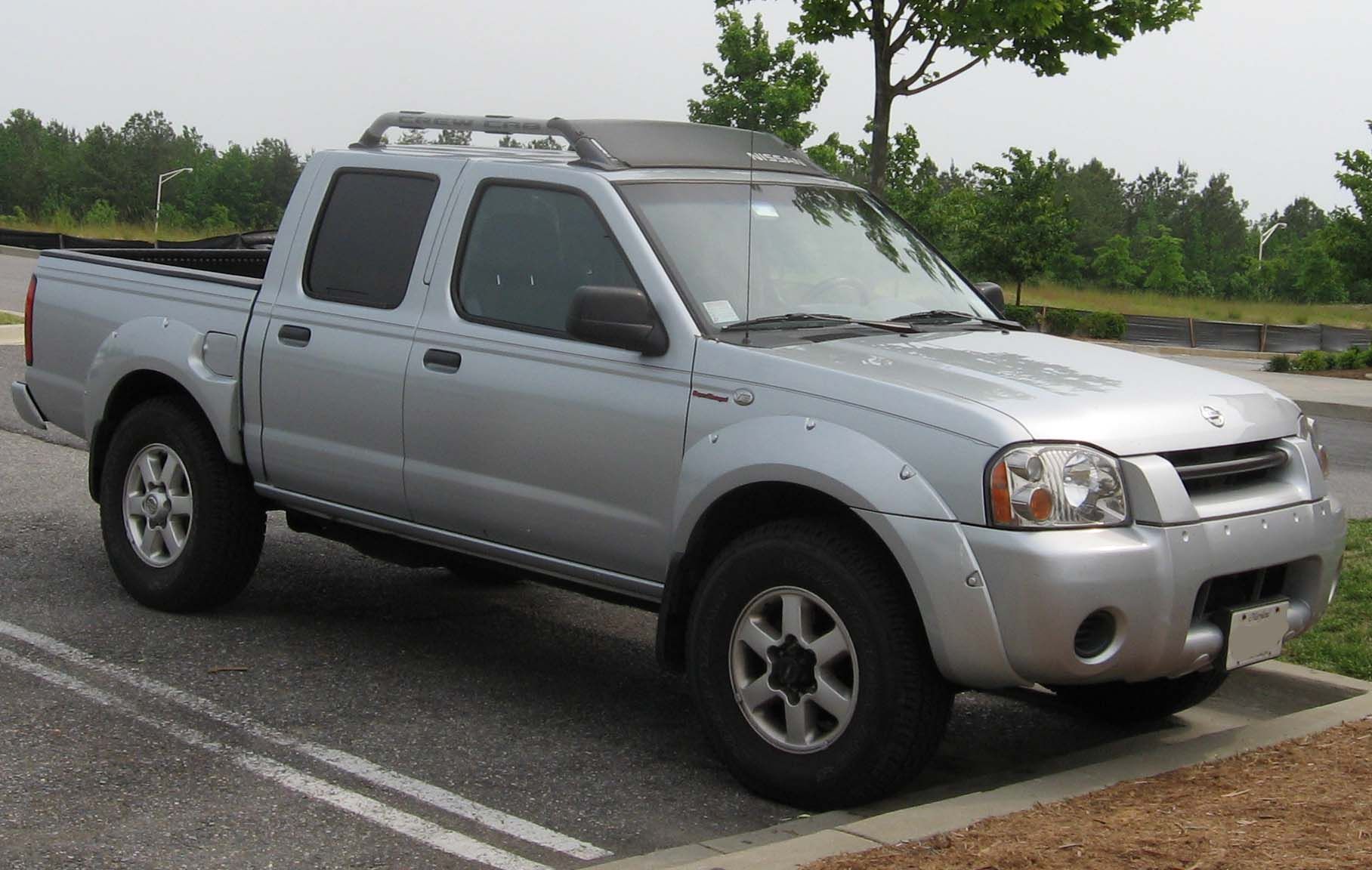
14. **Nissan Frontier**As a mid-size pickup truck, the Nissan Frontier should ideally offer robust reliability and dependable performance, qualities crucial for truck buyers. However, many owners have found themselves shaking their heads and pounding dashboards in frustration over the truck’s significant problems, particularly within specific model years that are now notorious for their flaws.
The 2005 to 2010 model years of the Nissan Frontier are particularly infamous for severe transmission issues. The root cause was a design flaw where the radiator would leak coolant directly into the transmissions, leading to catastrophic internal damage. This resulted in a range of debilitating symptoms, including slipping gears, jarring herky-jerky shifting, and ultimately, complete transmission failure, making these models incredibly costly to maintain.
Compounding these critical transmission problems, owners have also reported persistent engine and timing chain issues. These additional mechanical grievances further underscore the Frontier’s reputation for unreliability during these periods. For those who purchased these specific models, the dream of a capable pickup truck quickly turned into a nightmare of constant repairs and a rapidly depreciating asset, illustrating a clear case of value plummeting due to inherent design flaws.
Car Model Information: 2014 Nissan Frontier S
Categories: All set index articles, Articles with short description, Nissan vehicles, Set index articles on cars, Short description is different from Wikidata
Summary: The Nissan Frontier is a nameplate used on three different pickup truck models by Nissan:
Nissan Frontier (international), an alternative nameplate for the NP300/Navara on some markets
Nissan Frontier (North America), a rebadged NP300/Navara from 1997 to 2021, then became a separate model since 2021
Nissan Frontier Pro, a rebadged Dongfeng Z9 PHEV that will be available from 2025.
Get more information about: Nissan Frontier
Buying a high-performing used car >>>
Brand: Nissan Model: Frontier
Price: $11,685 Mileage: 131,197 mi.
Read more about: Beyond the Showroom Shine: 15 New Cars Experts Warn You to Avoid in 2024 Due to Pervasive Reliability Concerns
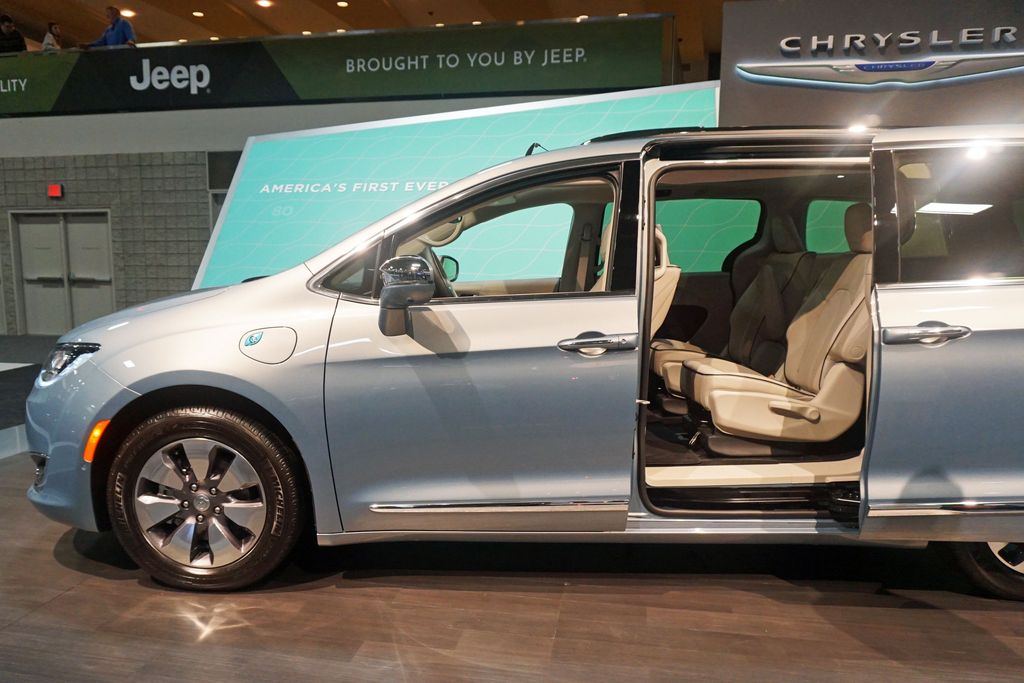
15. **Chrysler Pacifica Hybrid**The Chrysler Pacifica Hybrid stands out as a popular minivan, appealing to families seeking fuel efficiency through its plug-in hybrid powertrain. However, for many owners, the promise of eco-friendly savings has been significantly undermined by a troubling array of battery and electrical problems. According to numerous accounts, the fuel efficiency benefits are often not enough to offset these persistent issues.
Common complaints among Pacifica Hybrid owners include battery drain, which can leave them stranded or without the expected all-electric range. Inconsistent all-electric range often means the vehicle doesn’t perform as advertised, eroding confidence in its hybrid capabilities. More severely, some owners have faced outright battery failure, a highly expensive repair that can negate any savings from reduced fuel consumption.
Adding to the list of problems are issues with the electric continuous variable transmission, further complicating the vehicle’s reliability profile. The intricate nature of hybrid powertrains means that when components like the battery or specialized transmission fail, repairs can be particularly costly and complex. This makes the Pacifica Hybrid a prime example of how advanced technology, when not perfectly executed, can lead to significant buyer regret and a faster-than-anticipated drop in resale value.
### Strategies to Navigate the Automotive Market and Avoid Depreciation Pitfalls
The experiences of these 15 vehicle owners collectively paint a vivid picture: buying a car today demands more than just checking boxes on a features list. It requires a keen understanding of long-term value, reliability, and market trends. Depreciation, often overlooked in the excitement of a new purchase, is a critical financial factor that can silently erode thousands of dollars from your investment.
So, what drives this alarming rate of depreciation in certain models, and how can savvy consumers protect themselves? Firstly, the `Make and Model Game` plays a huge role. While brands like Toyota and Honda are legendary for value retention, luxury marques such as BMW, Mercedes, and particularly those highlighted in our research like Maserati, Jaguar, and Land Rover, tend to lose value much faster. This is often due to high MSRPs, rapid `Technology churn` making fancy features quickly outdated, and `Maintenance costs` that scare off secondhand buyers. For instance, the 2022 Jaguar I-Pace loses a staggering 47.36% of its value over five years.
Beyond brand reputation, several other factors contribute to rapid value loss. `New Model Years and Redesigns` can instantly devalue previous generations, as buyers invariably gravitate towards the latest tech and styling, evidenced by the 2022 Nissan Leaf depreciating by 46.29% partly due to newer models offering longer range. `Mileage Is the Silent Killer`, with high odometer readings signaling impending repairs and maintenance, making low-mileage vehicles far more attractive on the used market. Furthermore, `Age and Obsolescence` mean that cars over 10-15 years old can struggle to hold value as parts become scarce and crucial safety or infotainment features become prehistoric, even if they are in pristine condition.
The `Condition and Maintenance History` of a vehicle are paramount; a clean service record and accident-free past are gold. Conversely, a poorly maintained car, regardless of its luxury pedigree, will see its value plummet. `Market Demand and Fuel Trends` also dictate depreciation; a surge in fuel prices can quickly diminish the appeal of large V8 SUVs, while increased competition, as seen with the 2022 Volkswagen ID.4 losing 51.33% in five years, impacts market saturation. Even `Styling That Doesn’t Age Well` can hurt, with polarizing designs like the 2022 Tesla Model X contributing to a 55.23% value drop. `Lack of Practical Features` like cramped rear seats or tiny trunks, and `Price Shock at the Start` (where high-MSRP vehicles like the 2022 Lucid Air can shed over $70,000 in five years) are other significant factors. Finally, `Customization and Mod Culture` can alienate mainstream buyers, and `Broader Economic Factors` like inflation and interest rates, alongside the `Image Factor` of a brand, all play a part.
### How to Protect Your Investment and Avoid Financial Pitfalls
While you can’t entirely halt depreciation, you can certainly outsmart it with a few strategic moves that can prevent significant financial losses. One of the most effective strategies is to `Buy used`, allowing someone else to absorb the initial, steepest drop in value. This simple choice immediately puts you in a better financial position from the outset of ownership.
Crucially, `Stick with reliable brands`. As demonstrated, some brands are practically legendary for their long-term value retention. Brands like Toyota, Honda, and Subaru consistently win the long game, holding their value far better than many others. Conversely, as highlighted earlier, brands such as Maserati, Jaguar, Land Rover, Chrysler, Fiat, Buick, and Lincoln consistently rank among the worst car depreciation offenders, with models often losing over 50% of their value in just three years due to factors like limited reliability, high maintenance costs, and low brand appeal.
Additionally, `Avoid custom mods` if resale value is a concern; keeping your vehicle in its factory-stock configuration appeals to a wider audience of potential buyers. `Limit mileage` by keeping annual mileage under 10,000, as lower mileage vehicles invariably attract more attention and command higher prices. Perhaps most importantly, `Maintain it well` and meticulously keep all service records, as a documented history of care adds serious resale credibility and reassures future buyers.
Finally, `Track market trends` diligently. Don’t find yourself purchasing a gas guzzler just as fuel prices begin to spike, or investing in an electric vehicle model if a new, significantly improved version is just about to launch. Staying informed about shifts in consumer preference and industry developments can help you make a timely and smart purchase decision, safeguarding your investment.
### Your Automotive Future: Informed Choices for Lasting Value
Car Model Information: 2024 Volkswagen Tiguan 2.0T S
Name: Chrysler Pacifica (RU)
Manufacturer: Chrysler (automotive brand)
Aka: Chrysler Voyager,Chrysler Grand Caravan (Canada, 2021–present)
Production: 2016–present
ModelYears: 2017–present
Assembly: Windsor, Ontario
Designer: Irina Zavatski,Winnie Cheung (interior)
Class: Minivan
BodyStyle: 5-door minivan
Layout: Front-engine, front-wheel drive,Front-engine, all-wheel drive
Platform: Compact U.S. Wide platform
Related: Chrysler 200#Second generation (2014–)
Engine: Chrysler Pentastar engine#3.6L,FCA Global Medium Engine
Motor: 2x electric motors (SiEVT main motor & motor generator; PHEV)
Transmission: ZF 9HP transmission,automatic transmission,Continuously variable transmission
Drivetrain: PHEV
ElectricRange: cvt
Battery: val,lithium-ion battery
Wheelbase: 3089 mm
Abbr: on
Order: flip (hybrid)
Length: 203.6 in
Width: 79.6 in
Height: convert
Weight: {{convert,1964,kg,lb,abbr=on,order=flip
Predecessor: Chrysler minivans (RT)
Categories: 2010s cars, All-wheel-drive vehicles, Articles with short description, CS1 Spanish-language sources (es), Cars introduced in 2016
Summary: The Chrysler Pacifica is a minivan produced by the Chrysler division of Stellantis since the 2017 model year. Replacing the Chrysler Town & Country, the Pacifica is the sixth generation of Chrysler minivans, taking its name from the 2004–2008 product line. Along with serving as the first minivan with a plug-in hybrid drivetrain, the Pacifica has also served as a platform for autonomous vehicle development.
For the 2020 model year, Chrysler repackaged the lower-trim versions of the Pacifica as a revived Chrysler Voyager, largely to expand fleet sales of the model line; following the retirement of the Dodge Grand Caravan, the Chrysler Voyager was introduced in Canada for 2021 as the Chrysler Grand Caravan (moving the nameplate from Dodge to Chrysler after 36 years). Following the retirement of the Chrysler 300 sedan, the Pacifica/Voyager/Grand Caravan is currently the only vehicle marketed by Chrysler.
Chrysler has assembled the Pacifica minivan (and the Voyager/Grand Caravan) in its Windsor Assembly facility in Ontario (home to Chrysler minivan assembly since 1983).
Get more information about: Chrysler Pacifica (minivan)
Buying a high-performing used car >>>
Brand: Chrysler Model: Pacifica Hybrid
Price: $22,491 Mileage: 42,675 mi.
Read more about: Beyond the Showroom Shine: 15 New Cars Experts Warn You to Avoid in 2024 Due to Pervasive Reliability Concerns
As we’ve explored the complex world of automotive depreciation, one truth stands clear: the journey of car ownership is fraught with financial implications that extend far beyond the initial purchase price. From notorious transmission failures to plummeting resale values, the lessons from these 15 vehicles are invaluable for any consumer. Understanding these pitfalls, backed by data and real-world experiences, empowers you to make smarter, more resilient choices in a market that constantly evolves. By learning from the regrets of others, you can steer your own automotive future towards lasting value and genuine satisfaction, ensuring your next vehicle doesn’t become another cautionary tale of money lost. Remember, in the high-stakes game of car ownership, knowledge truly is your most powerful asset.

